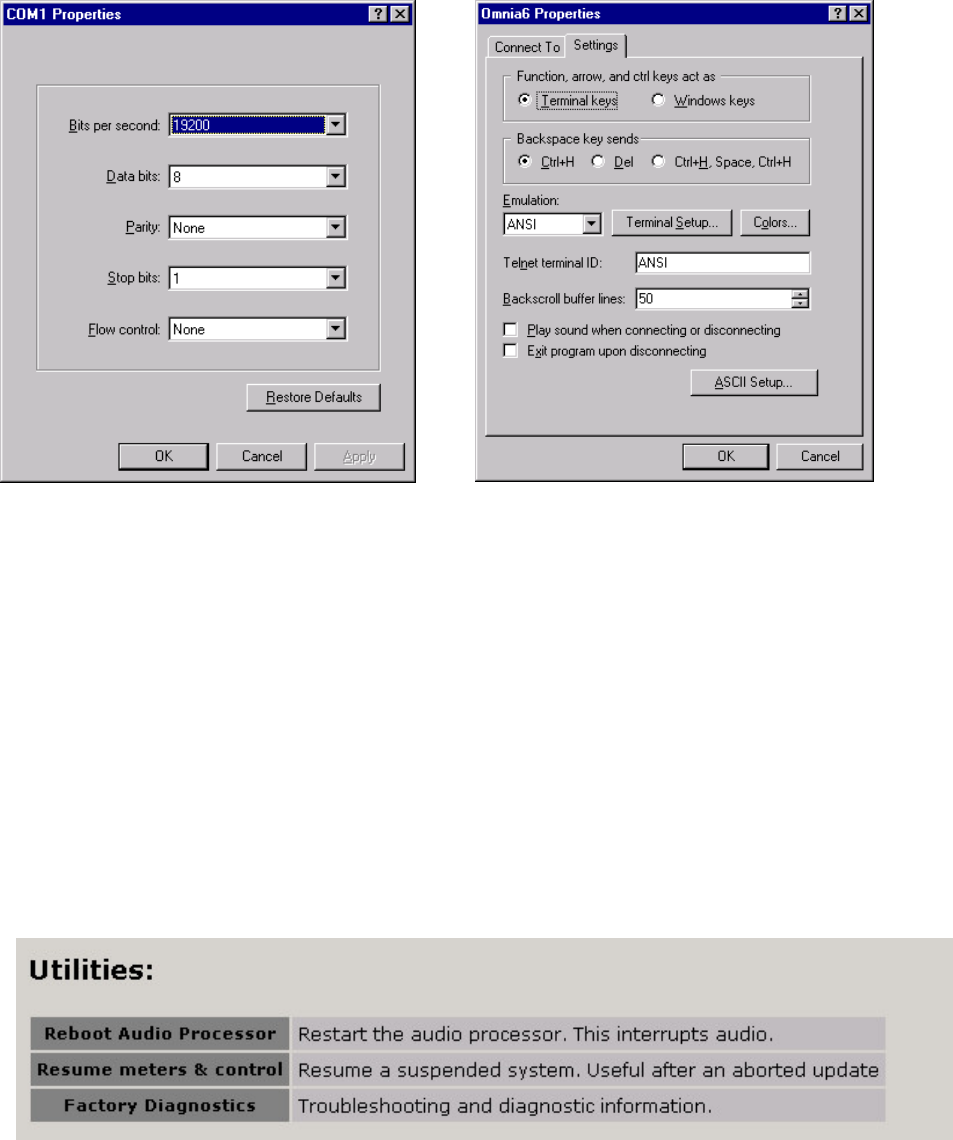User's Manual
Table Of Contents
- Welcome to Omnia.ONE!
- OmniaONE Quick-Start Setup
- Sensus( Technology: Audio Processingx3
- S A F E T Y I N S T R U C T I O N S
- HAZARD / WARNING LABELS
- Manual Update Notification
- Chapter-1: Installation
- Chapter-2: Getting To Know Your OmniaONE
- Chapter-3: Getting The Sound You Want
- Chapter-4: Main Menu Selections
- Appendix A: Performance Specifications
- Appendix B: Troubleshooting/Service/Warranty
- Appendix C: Remote Control and Software Update Procedure

troubleshooting techniques for isolating possible OmniaONE problems in the field, and also how to obtain help or
repair service from Omnia.
To take complete advantage of this functionality, you only need a standard terminal program for DOS, Windows, or
other operating system. It must be configured for a default baud rate of 19200, no hardware handshaking, and using
a terminal emulation for VT100. At Omnia, we commonly use the Hyperterminal
©
program that ships with
Microsoft Windows
©
, but you can use whatever program you are familiar with. Please see the examples below for
how we've set up our connection:
Once these parameters have been entered and saved as a connection profile, they can be used to capture and display
(and print) the output of the OmniaONE’s RS-232 internal serial port during boot up.
Diagnostics and Error Messages
To run a system diagnostics check of the OmniaONE unit that can be used by Telos/Omnia Customer Support
personnel in case of difficulty with the unit, click on the “Factory Diagnostics” link option in the Utilities section
at the bottom of the Configuration screen:
OmniaONE Multicast - Use and Operation Manual – Version 0.90
57










